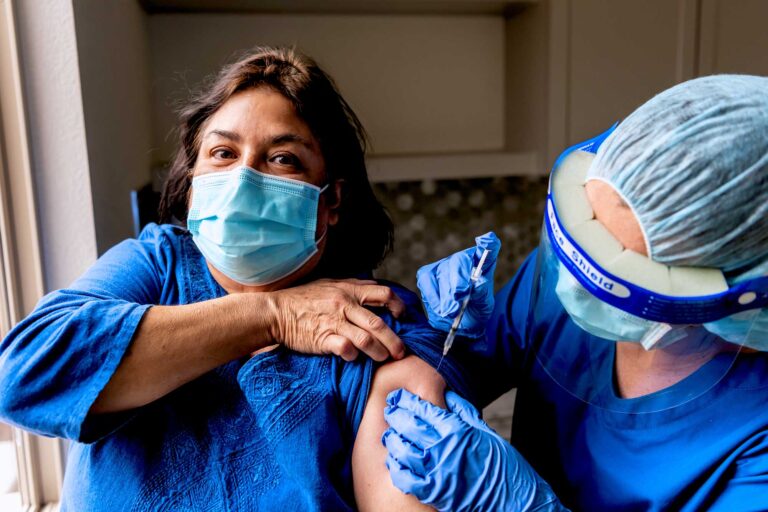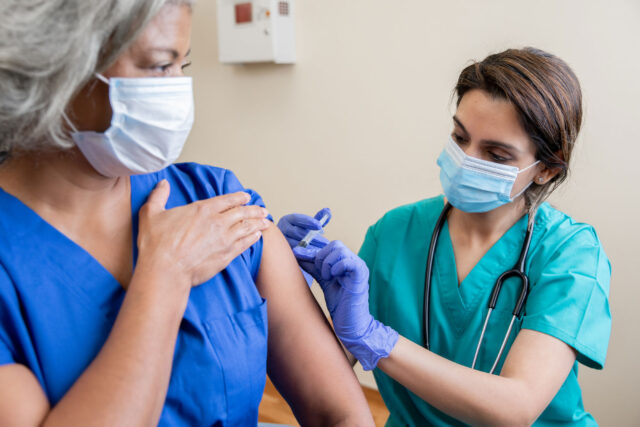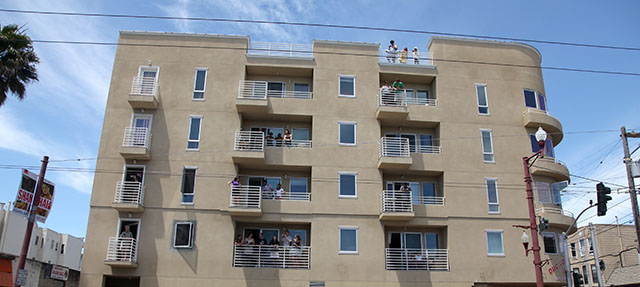Despite continuing surges in COVID cases, death rates have fallen considerably as California’s vaccination rate has climbed. And now that the CDC has recommended vaccines for young children, virtually all Californians can soon get vaccinated. As vaccines have become widely available, some—but not all—of the troubling disparities in COVID-related death rates that we saw earlier in the pandemic have narrowed.
Since the start of the pandemic, more than 91,000 Californians have died from COVID-19, which translates to about 230 deaths per 100,000 people. According to statewide data, death rates peaked around January 2021 and then began to decline in March 2021, as vaccines became more widely available.
Older Californians (over age 65) have considerably higher death rates, though deaths among this group have declined substantially since vaccines became widespread. A surge in cases at the beginning of 2022 led to another uptick in death rates among older Californians but were nearly a third lower (64 per 100,000 compared to 176 per 100,000) than the previous peak—underscoring the efficacy of vaccines in preventing serious illness and death.
In addition, death rates for Black and Latino Californians have been higher than rates for white and Asian Californians. In the first few months of the pandemic, Black Californians saw the highest death rates among major racial/ethnic groups. By August 2020, however, the death rate for Latinos had surpassed other groups—and, at the peak of pandemic deaths, about 55 Latinos per 100,000 adults died in January 2021, compared to 45 deaths for Black Californians, 38 deaths for white Californians and 33 deaths for Asian Californians per 100,000 adults.
Higher Latino death rates have been attributed to crowded housing conditions among Latinos, higher shares of Latinos who are essential workers, and lower levels of access to vaccines among Latinos early on. However, as Latino vaccination rates have risen over the past year, the gap in death rates relative to whites has closed. Still, nearly 40,000 Latinos have died due to COVID, and their overall COVID death rate remains about 20% higher than the death rate of white Californians.
Unfortunately, Black Californians continue to have elevated mortality rates. While vaccination rates are relatively low among Black Californians, especially in younger age groups, many other factors likely contribute to the continued disparity—including higher rates of poverty, distrust of the health care system, and other structural factors.
The success of vaccination campaigns, especially in Latino communities, has clearly paid dividends. However, more community engagement is needed, especially among Black Californians, who continue to suffer high death rates. In the most recent surge, white Californians also had elevated risk of death, as their vaccination rates have stalled. Even as cases rise once again, COVID-19 is less of a concern than it used to be for most Californians; this could make it more challenging to get more people vaccinated and boosted.




